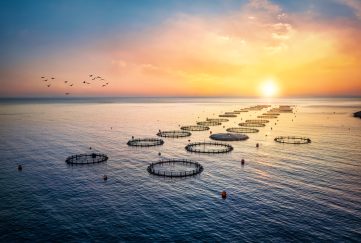European producers call for Common Aquaculture Policy

Aquaculture in Europe faces continued stagnation unless there is concerted action on the part of the European Union to give greater priority to food production.
So says the Federation of European Aquaculture Producers (FEAP) in its response to reports last week from the European Court of Auditors (ECA) and European Commission (EC).
The ECA report “Stagnating production and unclear results despite increased EU funding” was highly critical of the EU’s efforts to grow the aquaculture sector, and warned that Europe faces falling further behind other producers such as Norway and the UK.
In its response to that, the EC admitted that aquaculture is still stagnating in the EU but said its strategy for growth – including initiatives such as European Maritime, Fisheries and Aquaculture Fund and its aquaculture strategy rolled out in 2021 – is ongoing and it is still too early to judge whether it is succeeding.
FEAP says: “…the current stagnation status of aquaculture in the EU can be solved if the right actions are taken”.
Ineffective spatial planning for aquaculture and complicated licensing procedures are, FEAP says, “mere symptoms of a problem, not the actual causes behind the situation”.
FEAP has identified two areas for action: “ambition” and “cohesion”.
To address the first of these, FEAP says: “Food production in the EU must become an objective with similar levels of importance as environmental protection.”
The organisation adds that EU members states and their regions are becoming “overwhelmed” by EU environmental policy, leaving little room for developing aquaculture.
On the “cohesion” front, FEAP says the EU needs a Common Aquaculture Policy, either as part of the existing Common Fisheries Policy or incorporated into the Common Agricultural Policy.
FEAP agrees with the ECA and EC that there are no commonly accepted indicators to assess whether aquaculture is developing sustainably, but it argues that the list of parameters jointly drawn up by FEAP with the Aquaculture Stewardship Council would make a good official basis on which to judge sustainability.
FEAP represents 24 national fish farming associations in 23 countries, including EU and non-EU states. FEAP members account for a total production of over 2.5 million tonnes.

